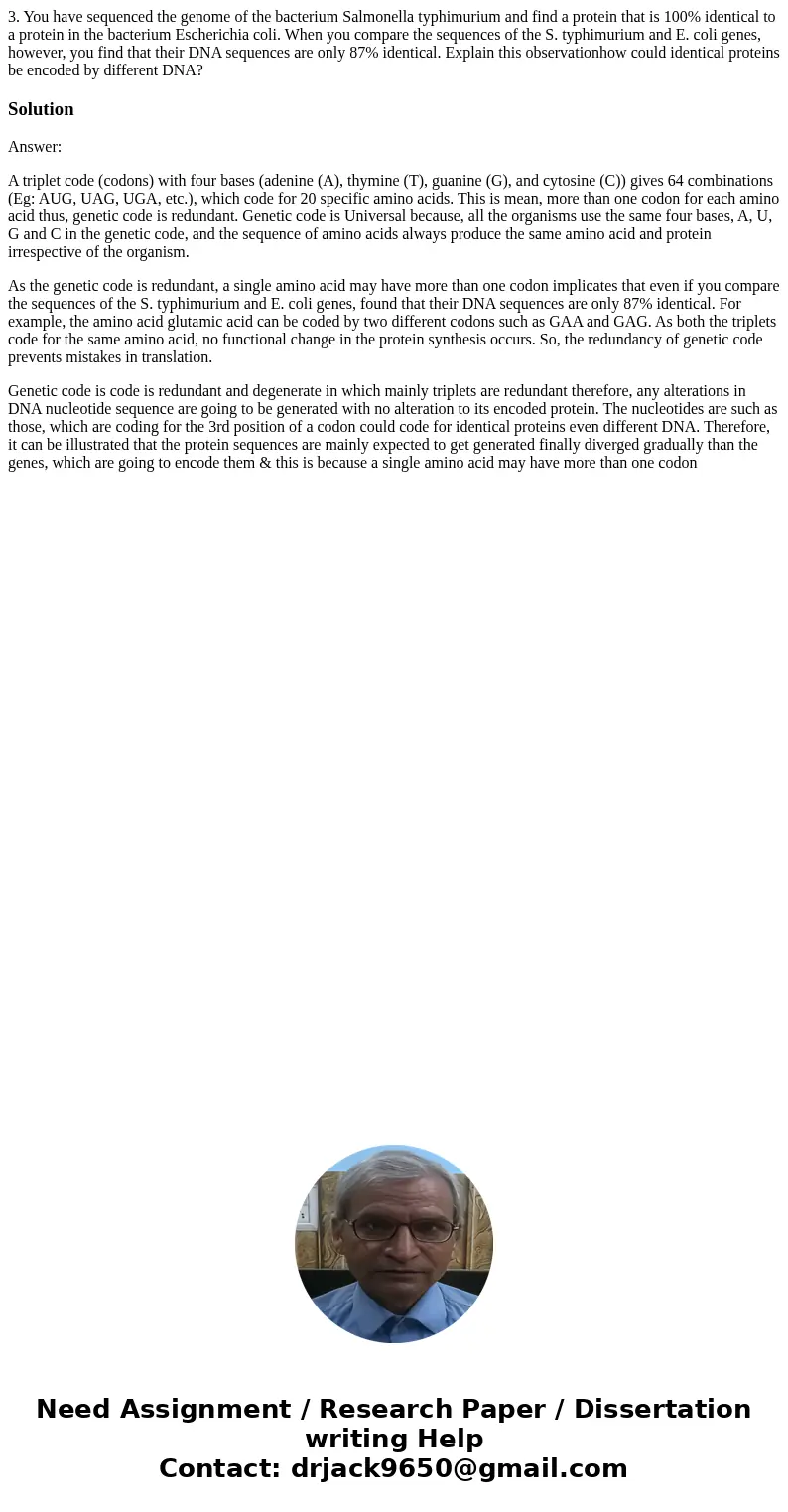3 You have sequenced the genome of the bacterium Salmonella
3. You have sequenced the genome of the bacterium Salmonella typhimurium and find a protein that is 100% identical to a protein in the bacterium Escherichia coli. When you compare the sequences of the S. typhimurium and E. coli genes, however, you find that their DNA sequences are only 87% identical. Explain this observationhow could identical proteins be encoded by different DNA?
Solution
Answer:
A triplet code (codons) with four bases (adenine (A), thymine (T), guanine (G), and cytosine (C)) gives 64 combinations (Eg: AUG, UAG, UGA, etc.), which code for 20 specific amino acids. This is mean, more than one codon for each amino acid thus, genetic code is redundant. Genetic code is Universal because, all the organisms use the same four bases, A, U, G and C in the genetic code, and the sequence of amino acids always produce the same amino acid and protein irrespective of the organism.
As the genetic code is redundant, a single amino acid may have more than one codon implicates that even if you compare the sequences of the S. typhimurium and E. coli genes, found that their DNA sequences are only 87% identical. For example, the amino acid glutamic acid can be coded by two different codons such as GAA and GAG. As both the triplets code for the same amino acid, no functional change in the protein synthesis occurs. So, the redundancy of genetic code prevents mistakes in translation.
Genetic code is code is redundant and degenerate in which mainly triplets are redundant therefore, any alterations in DNA nucleotide sequence are going to be generated with no alteration to its encoded protein. The nucleotides are such as those, which are coding for the 3rd position of a codon could code for identical proteins even different DNA. Therefore, it can be illustrated that the protein sequences are mainly expected to get generated finally diverged gradually than the genes, which are going to encode them & this is because a single amino acid may have more than one codon

 Homework Sourse
Homework Sourse